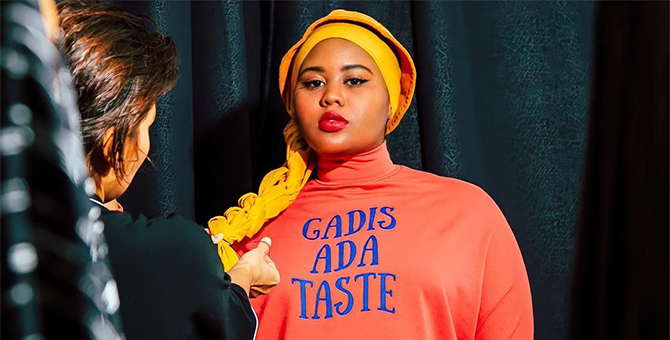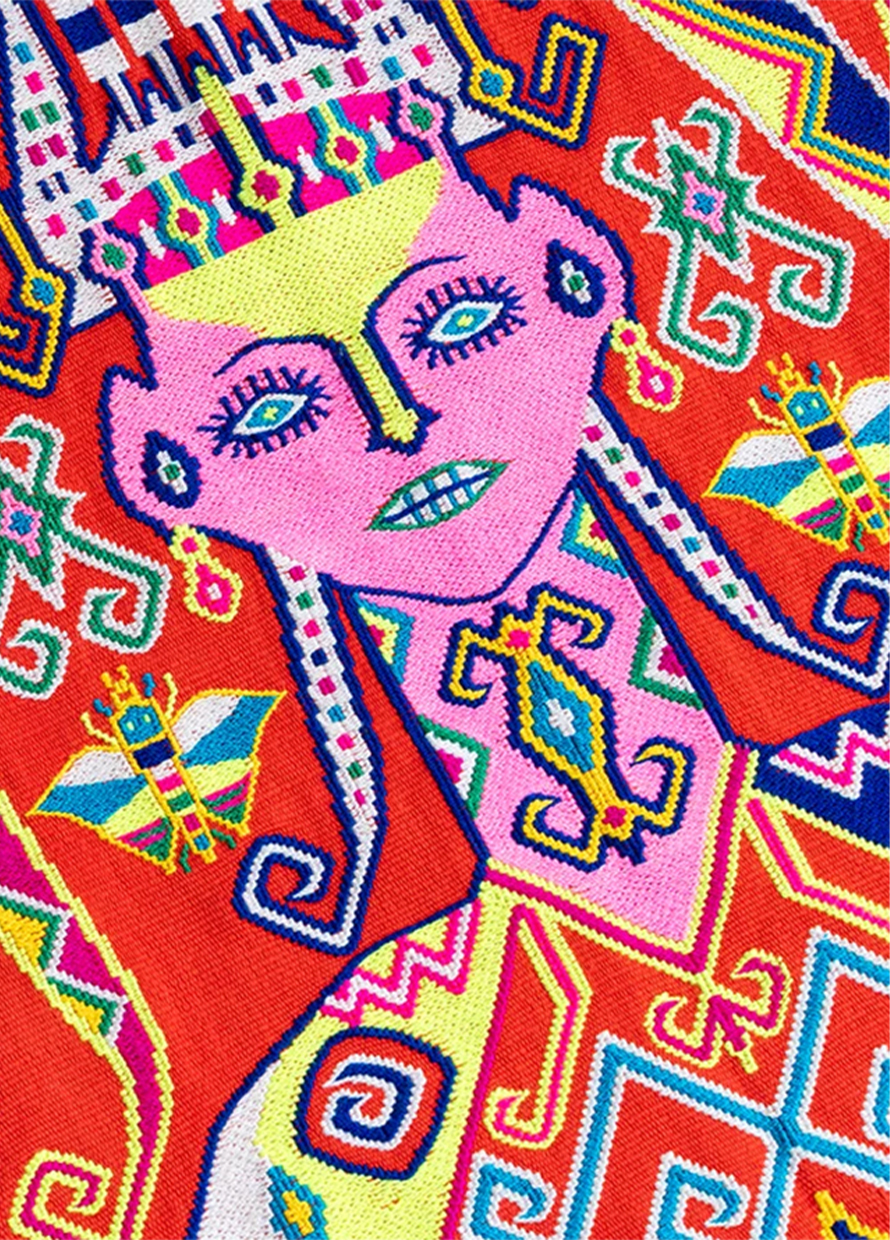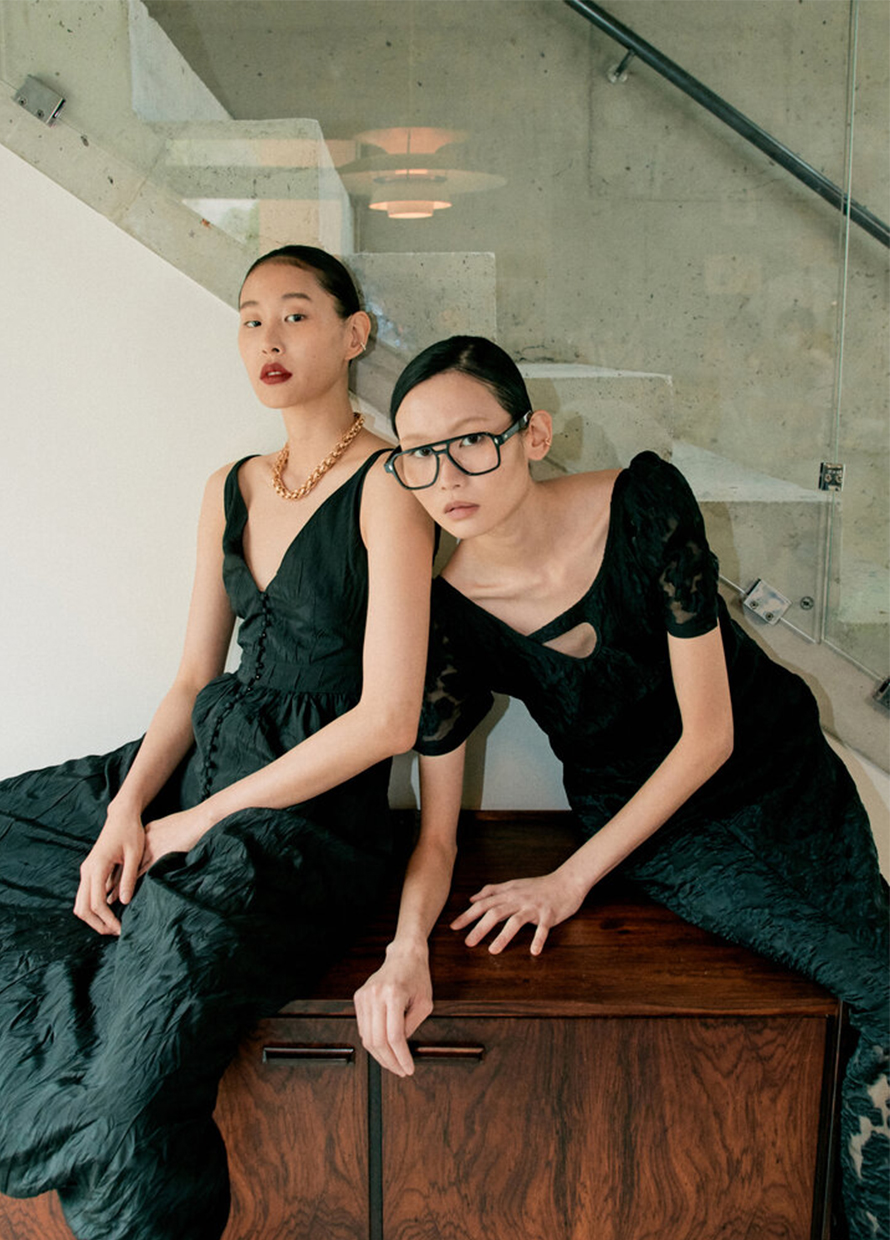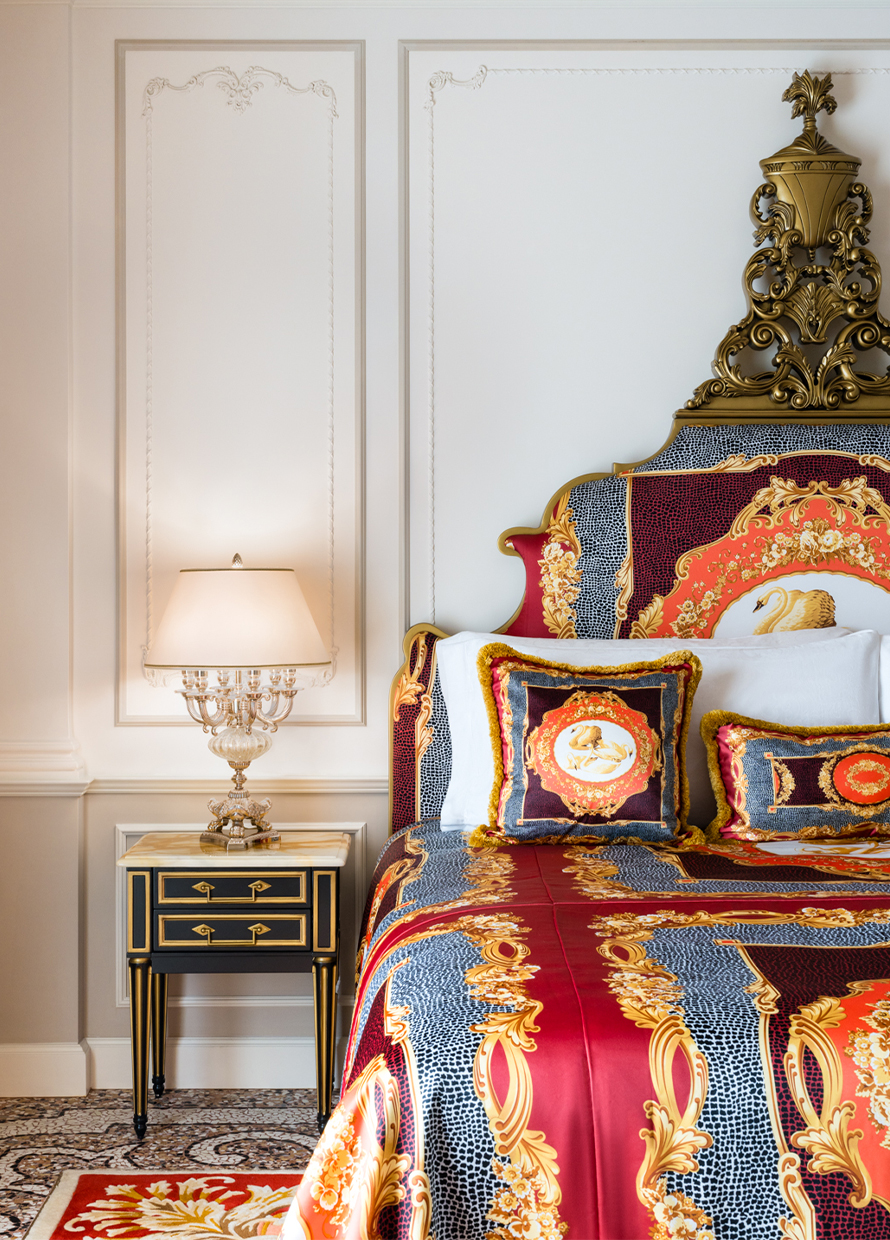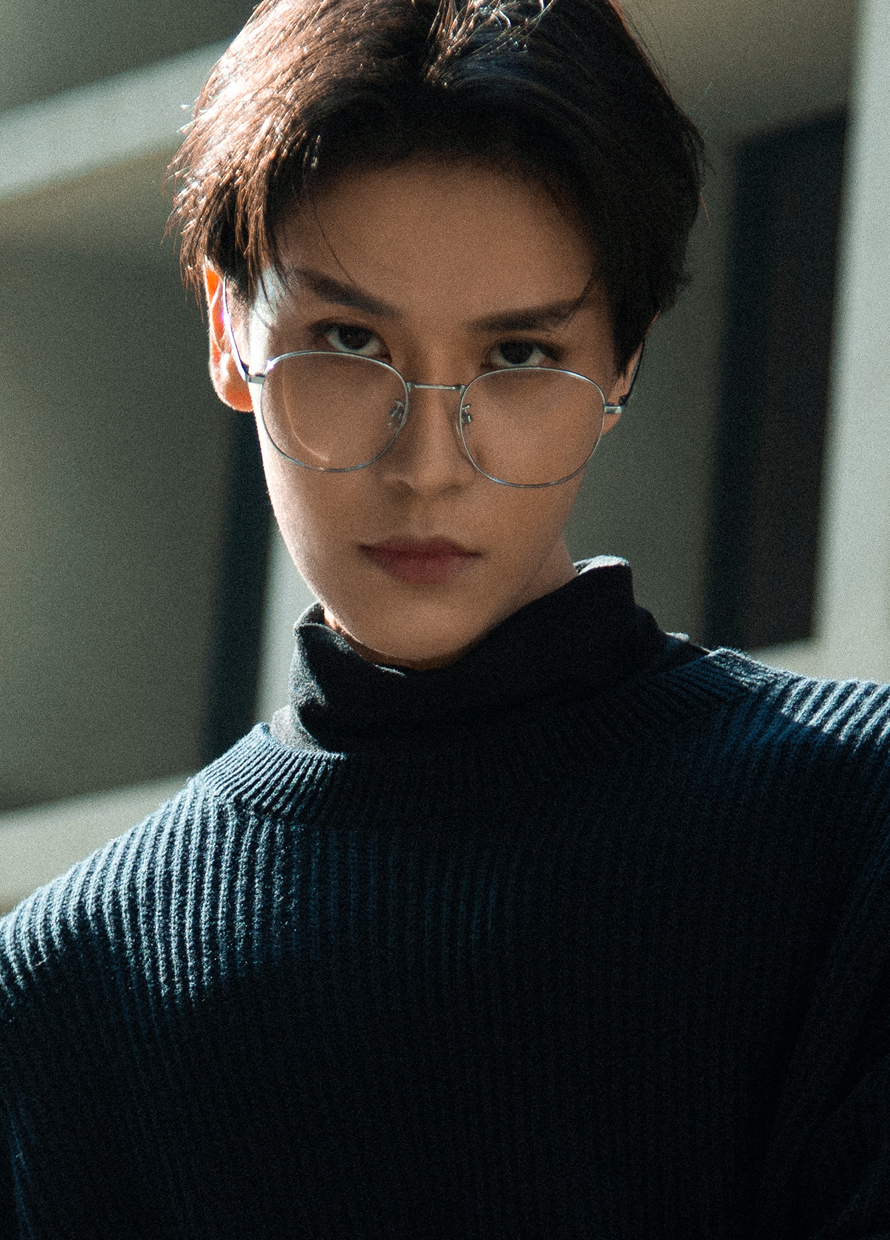Twenty-two-year-old Malaysian-Ghanaian plus-size hijabi model, Hikma Alhassan, got her start in fashion modelling after she posed for a friend’s beauty brand, and would soon after make her debut on the runway at an event hosted by the popular South-East Asian e-retailer Zalora in 2019. Now, three years into pursuing modelling part-time, the young beauty has worked with many homegrown Malaysian brands including Oh Sebenar, LILIT, and PopLook for their collection with fashion influencer Hanis Zalikha. In addition, the Gen Z model has participated in a photoshoot series celebrating dark skin, coordinated by Malaysian photographers Catherhea Potjanaporn and Daniel Adams.
Though the world of fashion is slowly growing to be more diverse and inclusive, Hikma stands out as a rarity in Malaysia’s fashion scene, where having light skin and slim body proportions are still the widespread beauty ideal. “In Malaysia, especially since we have many hijabi models, that aspect about me isn’t as rare. However, it is rare to find a model who is dark-skinned, a hijabi, and also plus-sized,” Hikma expresses over a Zoom chat.
As Malaysia has slowly been making plans to be a new hub for modest fashion in the coming years, modest models and influencers like Hikma will play a vital part in this steady expansion. Ahead, BURO chats with the emerging model to discuss her experience thus far, tokenism in the fashion industry, and representation.
How did you get into modelling?
“Modelling came to me unexpectedly. When I finished high school, one of my seniors had just started her own business and she was looking for models, so I decided to try and model for her first product. Suddenly after that, bigger brands like Zalora started to contact me for a runway show, which was quite shocking. I thought that maybe I would give it a try because it’s a once-in-a-lifetime opportunity. I participated in the runway, although afterwards, I felt I did really badly. Aside from it being my first time, I also didn’t know how to walk in heels or how to react to the audience staring at me. After that though, a lot of other local brands started contacting me to work with them.”
View this post on Instagram
What were some of your experiences growing up mixed-race?
“Growing up mixed-race for me in Malaysia was not the greatest. It was very rare to see people who are mixed like me. It’s normal to see half-Caucasians, but it’s kind of rare to see someone who’s half-black. For most of my friends, I’m the only black mixed friend they have. Sometimes, when people first meet me, they want to touch my skin or my hair. Then, in school, I’ve had teachers that would say, ‘Oh God, we love your hair,’ which I always felt was weird because if they truly loved it, why did they keep bothering me about it? Before I started wearing my hijab—which I did when I was 15—I had really bad experiences with my hair. Some kids in school would try to put pencils in it to try and see if they could hold. Furthermore, I could never wear my afro to school. I’ve always had to tie my hair because my teachers would say, ‘Oh, your hair is too big, the people behind you can’t see the signboard.’ Sometimes, even when we had religious studies, the teacher would tell me to wear my hijab and say, ‘Oh, your hair isn’t really that nice, you should wear a hijab just to cover it.’”
How did you get involved with the Dark Skin Is photo series?
“When they were looking for models for the shoot, the photographers personally contacted me through an Instagram DM, told me the concept and asked if I was interested. When I went in for the casting, there were all these dark-skinned Malaysians and we had to talk about our experiences growing up here. We didn’t really know who had been selected to model until the day of the shoot. There, I met about five people who were mixed like me—half-Malaysian and half-African–and that was the first time I had ever met people to who I could relate to. Some of them were Malay and Ghanaian or Malay and Nigerian. What was interesting to me was that when we were getting to know each other, a lot of our experiences in school were similar. It was kind of nice to meet people who are just like you. Besides them, there were also Indians and Malays at the shoot. After the images were published, they received mixed reviews; a lot of people loved them, but they also received some hate. There were even a few who asked why the photographers were showcasing African people in Malaysia. Didn’t they realise that half of the people in the shoot were actually Malays and Indians?”
View this post on Instagram
As a mixed-race and plus-size hijabi model, have you faced any challenges with getting opportunities?
“There have been instances where I’ve gotten offers, but when I accepted them, I’ve had to remind my clients that I wear a hijab. Which is crazy because if you see my Instagram, you’ll know I wear one every day. But sometimes, companies will ask me to take it off and model for them and of course when that happens, I decline. I’ve gotten offers from several big companies. I won’t say their names but I’ve received some really huge opportunities, only for them to end up saying, ‘Oh, sorry, we didn’t know that you wear a hijab’. I thought it was ridiculous because how do you see my pictures and think that I will take off my hijab for you? Overall though, I think in Malaysia, if you wear a hijab, there are still plenty of opportunities to be a model. Even if you might feel like your headscarf is stopping you, I don’t think that is really true because there are a lot of companies who are now accepting of hijabi models.”
View this post on Instagram
Have you ever felt like the token person of colour when modelling?
“When brands started to contact me for work, I was always that one model who was not white or fair-skinned. Sometimes, I’m the only one who’s not thin. Most brands will likely have two or three thin and fair models, and then they’ll have me. I know some labels want to try something new, but at the same time, I feel like they should hire more models, who like me, are plus-size, have dark skin, and who also wears a hijab to model for them. That should be the norm.”
How do you wish to represent other plus-size women of colour in Malaysia’s fashion industry?
“I want to show that people like me exist and that we should be represented. Since I started modelling, I have received so many DM’s from others saying, ‘Oh, you’re just like me. I’m dark-skinned and plus-sized, and I’ve never seen anybody like this modelling and getting so much opportunity to be showcased in the media.’ So many people have been excited to see me representing them physically, which I am glad to hear of.”
Do you believe the fashion industry in Malaysia has become more inclusive of diverse looks and body types recently?
“Yes, I feel like because of all the body-inclusivity movements that have been happening around the world, the fashion industry in Malaysia has definitely taken it up a notch as far as increasing diversity. Especially when it comes to being more accepting of people of different colours and different sizes, which is a really great thing. Because in the past, everything was just bland. You were either fair or thin—that was all the representation we had in Malaysia. Thankfully now, we have more people who are dark-skinned or plus-sized modelling for brands and there are still a lot of labels who are reaching for this diversity and choosing to represent people who are different. So I think that is amazing.”
For more about body positivity and size inclusivity, click here.
| SHARE THE STORY | |
| Explore More |
